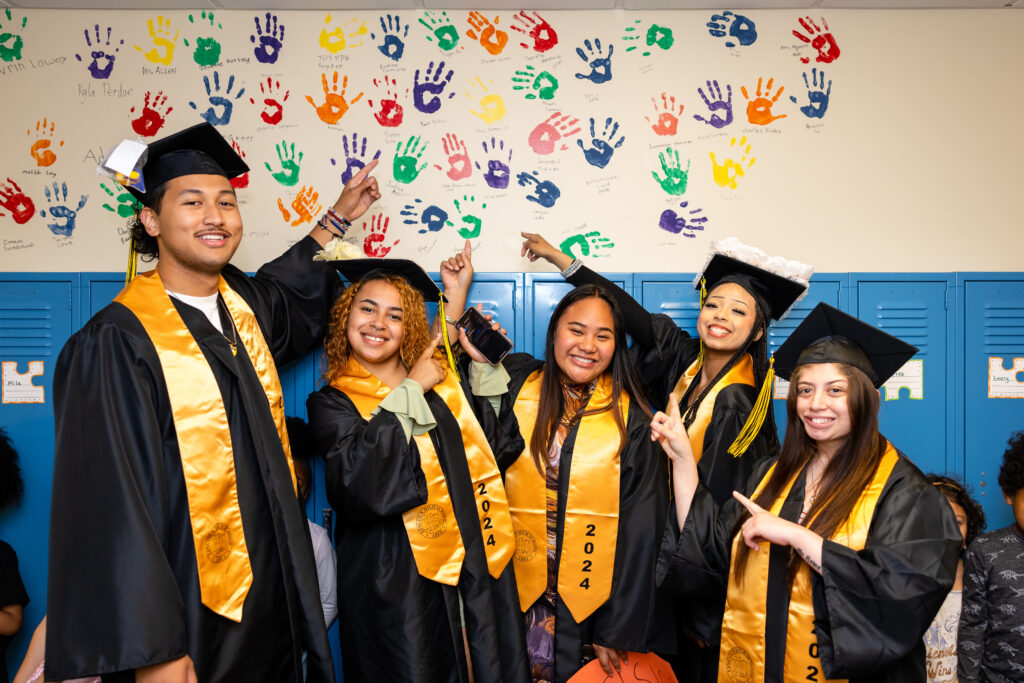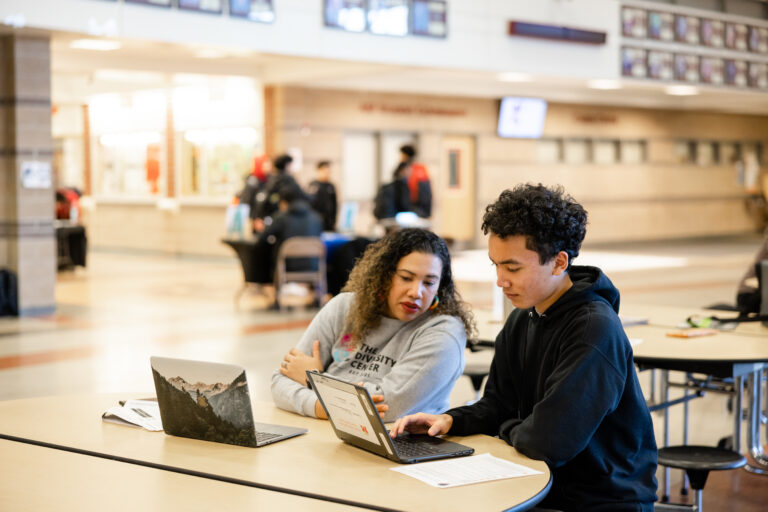
Ben Mitchell
Director of Advocacy & Policy, Foundation for Tacoma Students
Student loan forgiveness is a high profile Federal policy issue at the moment. Without getting into the tradeoffs involved in that specific policy, something that worries me about its prominence is that it could be feeding a narrative that “college isn’t worth it.”
This post will dig into recent research that shows that college is worth it in terms of earnings and upward mobility. But it’s also nuanced research that shows large differences between the value of different programs and schools. The takeaway for policy is that we need to think about ways to get more students from modest means into the schools and programs that provide the best prospects for economic mobility.
College degrees promote economic mobility, but not all college is equal
There are a lot of benefits to going to college, but the number one reason cited by students is that a college degree will lead to higher earnings and economic stability. And students aren’t wrong to believe this. It’s easy to find credible research that shows that college is worth it, and one study I want to highlight came out earlier this year. The research was done by a consulting agency called the HEA Group and compared the median earnings of five million former college students across 3,887 institutions, 10 years after they enrolled, with basic income benchmarks.
The analysis found that a majority of colleges exceed several minimum economic measures for their graduates. This includes earning above 150% of the federal poverty line, earning more than a $15 minimum wage, and earning more than a typical high school graduate with no higher education.
The rub with this is that those metrics are not exactly a high bar. For instance a typical high school graduate with no higher education of any kind earns $32,000 per year, and more than a thousand of the colleges included in the study leave their former students earning less than that 10 years after they’ve enrolled.
Schools that offer non-degree certificates and for-profit institutions make up the vast majority of these underperforming institutions. At 71% of for-profit schools, a majority of students were earning less than high school graduates 10 years after enrolling, compared with 14% of public institutions and 9% of private nonprofit schools. That is to say that public 2-year and 4-year schools and private nonprofit schools are not the culprits. The data clearly shows that these schools by-and-large do deliver high earnings for their graduates; and depending on the out of pocket cost, represent a very solid return on investment.
(You can view and download a spreadsheet with the complete dataset for the study here. I’ve sorted the sheet by state, so scroll close to the bottom to see student earnings data for Washington schools).
A policy goal: increase enrollment of low-income students
Given that Associate’s and Bachelor’s degree granting institutions are proven as economic mobility machines, an important question for state and federal higher education policy is the following: how can we get a larger number of students from low-income households enrolled in these leading colleges and universities?
A goal for higher education should be to educate a student body that resembles our state’s economic demographics. My emphasis is that this is important to do for the sake of ensuring a good-earning wage for students. But it’s also important for Washington’s – and really the entire country’s – economy to have as big a pool of talented, hard-working, well-educated people as we can possibly get.
The data shows that we have work to do. For the Washington high school class of 2021 there was a gap of 24 percentage points between the direct-from-high school enrollment rate of students from low-income households (37%) versus students from non low-income households (61%). For Pierce County, that gap was 22 percentage points, 36% versus 58%.
Both demographic groups are enrolling in college at lower rates than they were in 2012, but the decline has been steeper for students from low-income families. At the state-level, direct enrollment for low-income students declined by 13 percentage points, from 50% to 37%, between 2012 and 2021. The decline for students from non low-income families was less precipitous at seven percentage points, from 68% to 61%.
(The data points I’ve cited were pulled from WSAC’s Strategic Action Plan Dashboard).
The data trends are very clear that Covid made this situation worse, by exacerbating K-12 inequality and preventing many lower-income students from making it to college. But the economic enrollment gap before COVID was still stark at 20 percentage points in 2019.
Policy angles
A good homepage for policy when it comes to getting more low-income students enrolled in college is need-based financial aid. FFTS published a policy blueprint on this topic last year that contains ten evidence-based policy recommendations that we think of as a holistic package that as a state we should benchmark ourselves against. We’ll continue to work with partners to push these policy ideas at the state-level, and I’ll end the commercial there for now.
Something I want to unpack a little more deeply is a program called the American Talent Initiative (ATI). This project focused is on Bachelor’s degree granting institutions, specifically those with high graduation rates, and its goal is to persuade these schools to adopt policies that will diversify their campuses. It’s worthwhile to dwell on enrollment demographics at four-year campuses because, going back to the HEA Group research, these schools deliver the highest earnings for their students. If we want to promote upward mobility, then we need to see more students from low-income backgrounds earn bachelor’s degrees. But right now, the student bodies at four-year schools exhibit a smaller percentage of low-income students on average compared to community and technical colleges.
ATI’s latest report points to promising policy strategies for improving economic diversity.
- There should be transparent goals for lower-income student enrollment at four-year campuses, and there should be public commitments to specific lower-income enrollment levels. Washington has a state goal for educational attainment for 70% of people to earn a credential beyond high school, but it’s possible to meet that goal and exacerbate inequality if the majority of low-income students earn lower-value credentials in terms of career earnings.
- Relatedly, any four-year institutions that are improving in their ratio of low-income student enrollment should be recognized. Those schools show what can be achieved with prioritization and targeted approaches, and they can inform policy for the field.
- At the individual school level, we should shift merit-based financial aid resources to need-based financial aid programs. ATI cites data that shows that 27% of students from wealthier families are receiving more financial aid than financial-aid calculations suggest they need to afford college.
- Recruit more transfer students from community and technical colleges. While the emphasis here is on four-year schools, two-year schools are incredibly important. Students from low-income backgrounds often start at community or technical colleges, but the report points out that community college students are underrepresented at the most selective four-year schools
- Support students in navigating higher education. The work should not stop with enrollment. Lower-income students graduate from four-year colleges at lower rates, and there needs to be more emphasis given to academic support, navigating bureaucracy, and increasing participation in internships and research.
A note on guaranteed admissions
Washington has what I think is a really good policy for promoting economic diversity in campuses in the Guaranteed Admissions Program. This program allows high school graduates with a GPA of 3.0 or higher to enroll in our state’s public four-year institutions. The recent announcement of a new pilot program to combine guaranteed admissions with guaranteed financial aid looks really promising too. One might even call it a College Promise…🤔
The University of Texas Austin has something similar, except it’s a top 10% policy that automatically admits high school students in the top decile of their class. Research on this program found that students who were pulled into UT saw “increases in college enrollment and graduation with some evidence of positive earnings gains 7-9 years after college.”
University of Washington Seattle doesn’t participate in the Guaranteed Admissions Program. I think there are a mix of reasons for this, but I believe a big part of it is that they would see a surge of admitted students that would put a strain on their capacity to house, teach, and absorb them all. That’s fair enough, but I wonder what UW Seattle would say to a top X% policy like they do at the University of Texas. It’s the same idea as the GPA model, but UW could adjust the dial on the top X%, from 10% to 5% for instance, to mitigate overcrowding.
College is worth it. Let’s get a more diverse set of students in
Low-income students stand to gain the most from access to higher education, especially at more selective schools. Therefore higher education policy should focus on increasing enrollment, retention, and bachelor’s degree attainment among low-income students. Starting on a path at community college is a great way to go, but we should be clear that a bachelor’s degree promotes greater upward mobility compared to an associates degree or a non-degree credential. A social justice orientation for policy should include figuring out how to make it so more people from modest backgrounds earn this credential.




